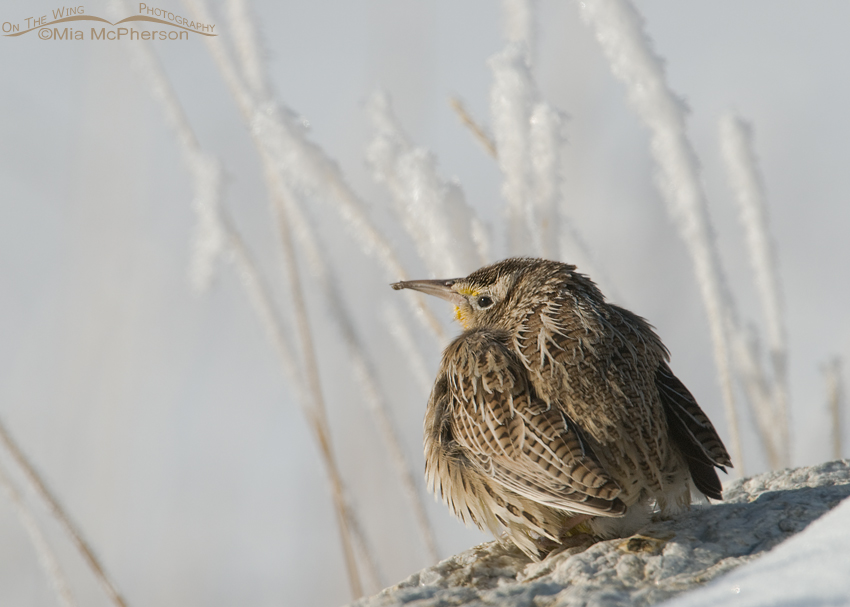 Western Meadowlark warming up after a long cold night – D200, f9, 1/750, ISO 400, -0.3 EV, 200-400mm VR with 1.4x TC at 400mm, natural light
Western Meadowlark warming up after a long cold night – D200, f9, 1/750, ISO 400, -0.3 EV, 200-400mm VR with 1.4x TC at 400mm, natural light
Last week after a fresh snow had fallen I headed out to a local wetlands to see if I could find any birds to photograph, the temperatures were in the low teens and that can sometimes make birds “sticky”. Not too long after I had gotten to my location I spotted a Western Meadowlark hunkered down on a rock trying to warm up with the rays of the rising sun.
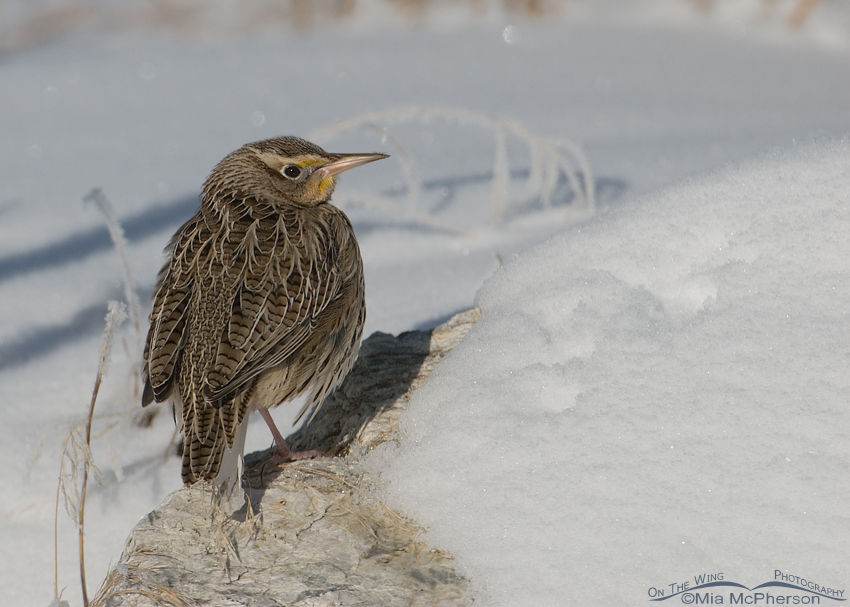 Western Meadowlark on a cold Utah morning – D200, f7.1, 1/2000, ISO 250, -0.3 EV, 200-400mm VR with 1.4x TC at 400mm, natural light
Western Meadowlark on a cold Utah morning – D200, f7.1, 1/2000, ISO 250, -0.3 EV, 200-400mm VR with 1.4x TC at 400mm, natural light
With the cold night temperatures there was hoar frost covering the vegetation and trees and ice particles clinging to the tail of this western meadowlark along with bits of grass seed heads that froze into the ice. Photographing in the snow reminds me of how the sugar sands of Florida’s beaches would bounce the light up from the ground and illuminate the undersides of the shorebirds I photographed there. With the brightness of snow I watch my EV compensation carefully, it is easy to blow out the whites in the snow and the lights in a bird’s plumage. Here my setting of -0.3 helped to control the exposure of the snow.
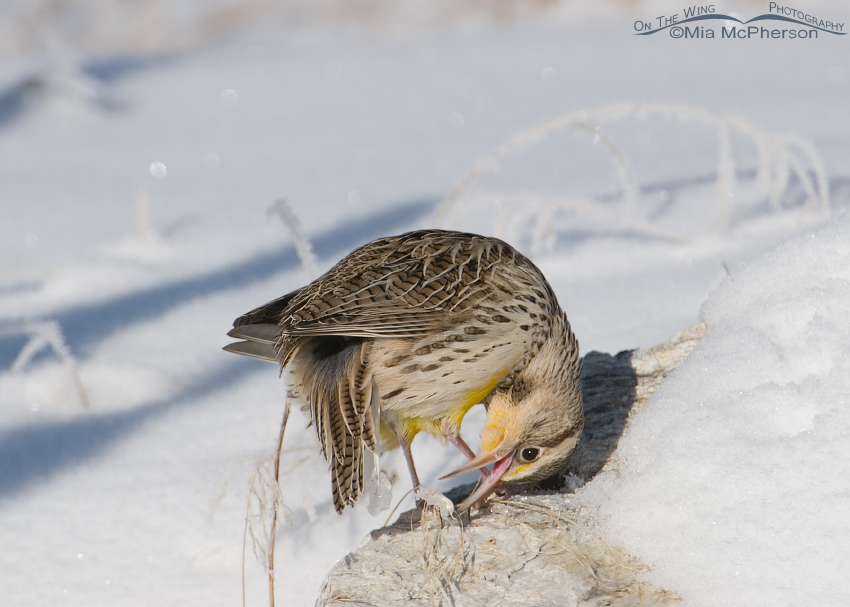 Western Meadowlark pulling ice off of its tail – D200, f7.1, 1/750, ISO 250, 0.0 EV, 200-400mm VR with 1.4x TC at 400mm, natural light
Western Meadowlark pulling ice off of its tail – D200, f7.1, 1/750, ISO 250, 0.0 EV, 200-400mm VR with 1.4x TC at 400mm, natural light
As the sun rose the meadowlarks became a bit more active. This meadowlark had icy clumps on the tip of its tail and was removing it by tugging on the ice with it’s bill. I imagine it might be difficult for them to fly until they knock the ice particles off.
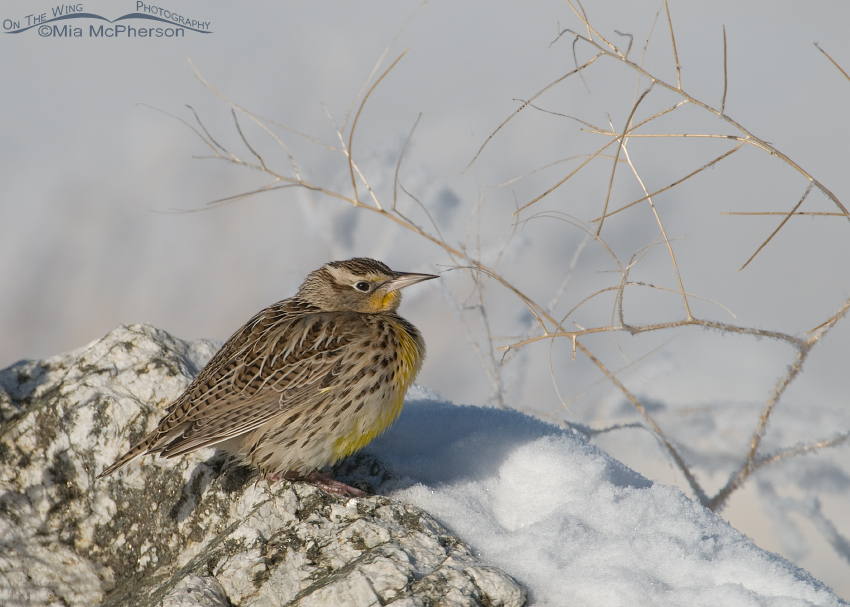 The morning sun warming a Western Meadowlark – D200, f7.1, 1/1250, ISO 250, 0.0 EV, 200-400mm VR with 1.4x TC at 400mm, natural light
The morning sun warming a Western Meadowlark – D200, f7.1, 1/1250, ISO 250, 0.0 EV, 200-400mm VR with 1.4x TC at 400mm, natural light
I’ve seen other birds with hoar frost on them, Bald Eagles completely coated, the rumps and head of American Kestrels and Northern Harriers, Barn Owls where their vision was obscured by the frost clinging to their facial discs and Ring-necked Pheasants with a light dusting on their backs, this may have been the first time I noticed how ice can cling to the tails of Western Meadowlarks. Utah winters can be very rough on the birds.
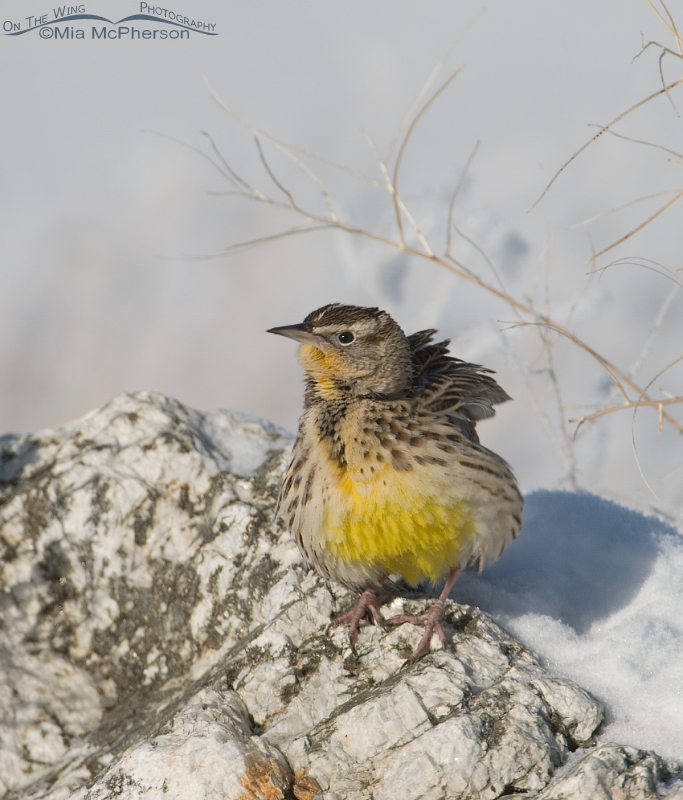 Western Meadowlark shaking its feathers – D200, f7.1, 1/1250, ISO 250, 0.0 EV, 200-400mm VR with 1.4x TC at 400mm, natural light
Western Meadowlark shaking its feathers – D200, f7.1, 1/1250, ISO 250, 0.0 EV, 200-400mm VR with 1.4x TC at 400mm, natural light
As the sun crept higher and the meadowlarks warmed up they fluffed and preened as if they have a routine they start their days with. They also call softly, seemingly to each other. The sunlight on the yellows of the western meadowlarks is quite beautiful to see, especially when there is the white of snow in the fore or background.
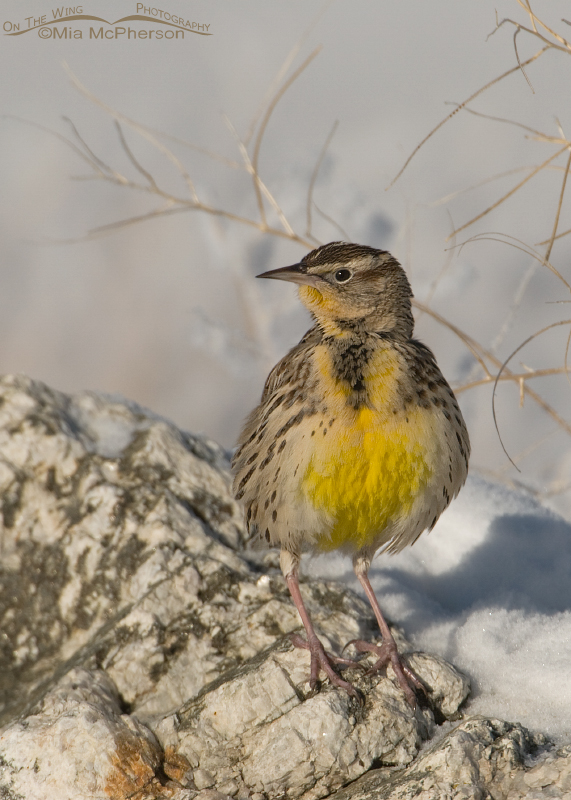 Alert Western Meadowlark – D200, f7.1, 1/2000, ISO 250, -0.3 EV, 200-400mm VR with 1.4x TC at 400mm, natural light
Alert Western Meadowlark – D200, f7.1, 1/2000, ISO 250, -0.3 EV, 200-400mm VR with 1.4x TC at 400mm, natural light
I had a wonderful time photographing and observing these Western Meadowlarks in the early morning light. I feel like I learned something new about this species, that is always a good thing when it comes to bird photography. I’m glad I noticed the small form of the first meadowlark hunkered down on the rocks, someone less observant may have missed a golden opportunity with these birds.
Life is good.
Mia
Click here to see more of my Western Meadowlark photos plus facts and information about this species.


All these images nicely capture the winter feel and mood.